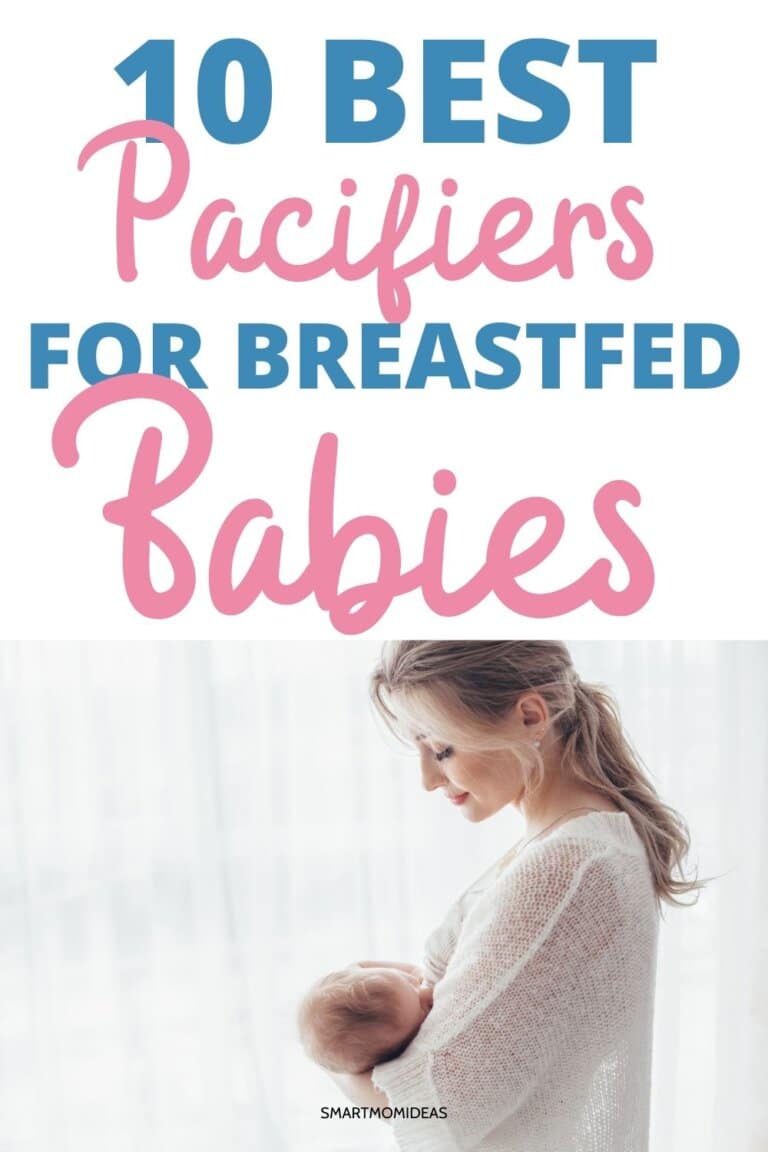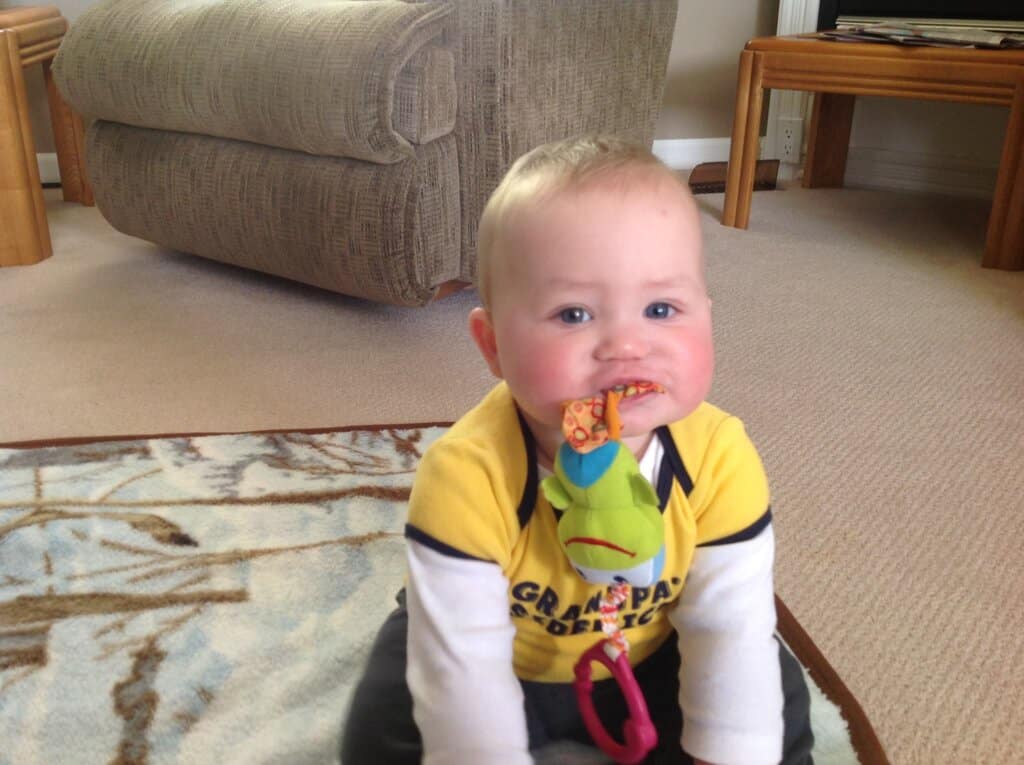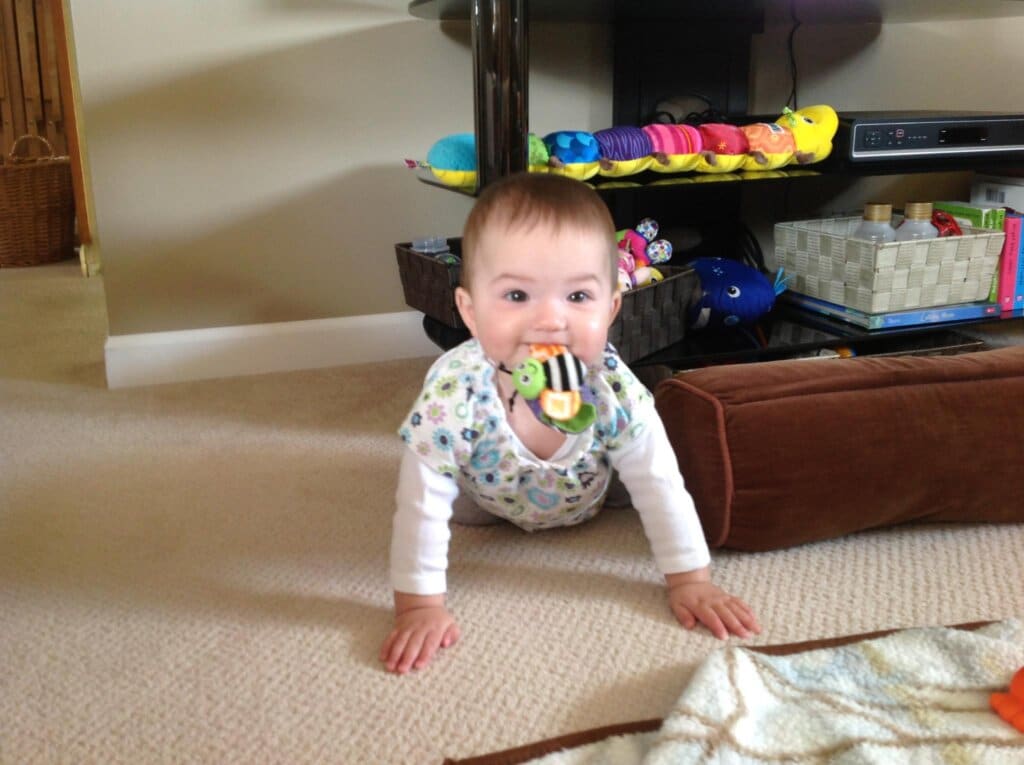Learn the best pacifiers for breastfed babies

As a breastfeeding mama, you might be wondering if you should give your little one a pacifier.
There are both pros and cons to introducing a pacifier to your little bundle of joy.
What is the best pacifier for breastfed baby if they never had one in the first place?
Ultimately, whether you choose to use pacifiers for breastfeeding newborns or not is up to you as a parent.
My twins actually did both bottle feeding and breastfeeding and didn’t take to the pacifier.
I’m not sure why.
I tried different pacifiers for breastfed babies and tried at different times but usually they would just not grab on to it or just spit it out.
And it wasn’t just one baby, but both twins!
I wish they would have taken a pacifier!
I did my research and bought plenty different types, but for some reason or another my twins preferred other things to pacify with.


In any case, I spent time researching to help you find the best pacifiers for breastfed babies!
First I want to go over some of the benefits and disadvantages of using a pacifier for breastfed babies.
I was concerned about sucking on a pacifier and having teeth complications down the road.
Then provide you with some top suggestions if you choose to opt to go the pacifier route. Finally, answer your questions about pacifiers for breastfed babies.
So let’s get right to it!
The Pros and Cons of Pacifiers for Breastfed Babies
I’m sure you are already aware that breastfed babies eat a lot!
Having a baby pacifier most like the breast can help to keep them content between feedings or when you simply aren’t in a position to breastfeed them at that immediate moment.
Mothers are encouraged to wait three to four weeks before introducing a pacifier to ensure that they have a good nursing routine down first.
By waiting to introduce a soother to your baby, you ensure that they prefer the breast over a soother or dummy pacifier. You definitely don’t want to confuse your baby on not taking the breast when you introduce a pacifier.
To help you out with introducing pacifier use, check out the pros and cons of using newborn pacifiers so you can find the best binky for a breastfed baby.
The Pros of Pacifiers for Breastfed Babies
- Soothing: Sucking is a natural reaction for many babies. The simple act of sucking on something, whether it is a real or a fake nipple, can help to soothe them and keep them calm. That’s why a breast pacifier works well.
- Distraction: Sometimes your little one needs to be distracted from other things that are going on. This could be at the doctor’s office (like the Mayo Clinic) getting a shot or having to check their weight. That’s why breastfeeding pacifiers work like a charm.
- Sleep: Very often babies fall asleep while they are nursing. However, once you move them or remove your nipple they might be more easily awoken. Giving them a pacifier can help to get and keep your little one asleep.
- Reduce SIDS: Whether at naptime or bedtime, sucking on an infant pacifier can help to reduce the risk of SIDS (sudden infant death syndrome) by up to 90%!
- Disposable: While you might love the idea of a pacifier, they are easier to wean babies from than if they suck on their fingers. When you are ready to get rid of the pacifier, you can throw them away or cut the nipple so they are no longer suckable (this can be effective for toddlers).
- In flight: If you fly your baby often or are planning on taking a flight, giving them a pacifier can help to “pop” their ears during the flight thus releasing build up air pressure.
The Cons
- Breastfeeding interference: As previously mentioned you should wait a few weeks before introducing a pacifier to your baby. This way you can develop a solid breastfeeding routine with your breast pump for example. The baby’s mouth is sensitive to the differences between sucking on a real nipple, a bottle, or a pacifier, which could potentially lead to babies being resistant to one or another. Having a pacifier for nursing babies is possible, but just wait until your newborn is comfortable breastfeeding.
- Dependency: If you are choosing to give your baby a pacifier, then make sure you and your baby don’t become dependent on it. For example, if you give your baby a pacifier every time they cry, then that will quickly become a habit. What happens when their pacifier falls out while they are sleeping? Most likely they are going to wake crying until they get it back in their mouth. If this does happen, here is a post to help you lose the binky easily.
- Middle ear infection: After the age of six months, those babies that are still using a pacifier can be more prone to middle ear infections or otis media.
- Dental issues: Sucking on a pacifier when they have no teeth will not cause any issues. However, once their baby’s teeth are fully coming in, continued use of a pacifier can lead to dental issues, such as misaligned teeth. For some it can be a choking hazard if there is no pacifier shield.
The Best Pacifiers for Breastfed Babies
There are many great options for pacifiers for breastfed babies. Like I said, my twins never took to pacifiers but I tried!
Here are our top 10 suggestions to help you decide on the best pacifier for breastfed baby!
NUK Silicone Orthodontic Pacifier
When it comes to choosing a breast pacifier, often we don’t think about the size of it or even realize that they came in different sizes. The NUK Newborn Silicone Orthodontic Pacifier actually comes in four different sizes; 0-2 months, 0-6 months, 6-18 months, and 18-36 months.
This comes in handy if your baby’s nose might get in the way of the pacifier.
The design of the nipple of the pacifier allows baby to gently exercise their tongue and jaw to promote healthy oral development. It includes vents for air circulation to prevent chafed skin and a heart-shaped design to allow room for their tiny noses.
Tommee Tippee Closer to Nature Soother Pacifier
This pacifier boasts a skin-like texture and a design that closely resembles a nursing nipple.
It is supposed to help babies more easily transition between breast, bottle, and pacifier with a stretch and flex just like a mother’s breast. It’s outward, curved design allows for plenty of air flow to baby’s face, preventing rashes and irritation.
This pacifier comes in two different sizes, 0-6 months and 6-18 months.
Ecopiggy Natural Ecopacifier

Unlike its silicone counterparts, this pacifier is made from pure rubber. Molded into one solid piece, it doesn’t contain any artificial colorings or chemical softeners. Not only is this pacifier great for helping to soothe a fussy baby, natural rubber is great for teething babies as it is much more difficult to bite through.
EvenFlo Feeding Balance Cylindrical Pacifier
These simple and effective pacifiers are designed to promote self-soothing through a natural tongue position.
This is one of the best paci for breastfed baby because it is one piece of soft silicone and offers an easy grip handle to easily attach a pacifier clip. The shape of the nipple on this pacifier is meant to mimic mother’s nipple in the early stages of breastfeeding.
HEVEA Classic Natural Rubber Pacifier
If you love the benefits of natural rubber, the HEVEA classic is another great option.
Unlike the Ecopiggy, this rubber pacifier has a few more ventilation holes and a heart-shaped design to allow room for baby’s nose. The one downfall about natural rubber dummies is that they are recommended to be replaced every six to eight weeks as the rubber can break down.
Philips Avent Soothie Pacifier

You are probably already familiar with this design of pacifier, it tends to be the ones that they give out at the hospital.
Like other similar pacifiers, it is orthodontic friendly. Latex and BPA free, this simple, one piece design is easy to clean and sanitize and trusted by doctors and hospitals nationwide.
They also have cute ones shaped like bears that are great for babies three months and older.
JollyPop Pacifier
What makes this silicone pacifier for baby unique is the outer rim of it is a harder piece of plastic covered in silicone.
This baby’s pacififer feature can come in really handy when baby starts to teeth and wants something a little harder to chew on. This pacifier is also available in a few different colors, which is a nice option.
The nipple is also easier for babies to latch on to with the rounded and pronounced tip.
Nanobebe Pacifier
Available in several cute colors, this pacifier for breastfed babies was designed to specifically contour to baby’s face, with curves comfortably fitting the chin and the nose.
An orthodontic option made from 100% silicone, this pacifier is great for breastfed babies and helps to prevent nipple confusion when switching between bottle, pacifier, and breastfeeding.
Dr. Brown’s HappyPaci Silicone Pacifier
As a long time fan of the Dr. Brown’s bottles for my twins, I also wanted to include these baby pacifiers as a great option for breastfeeding babies.
If you use the bottles, the silicone nipple shape of the pacifier is similar. It is made from a soft and lightweight one piece construction and is easily cleaned and sanitized. It includes a “butterfly” shape to easily fit those cute chubby cheeks and nose.
What is the Best Pacifier for Breastfed Baby?
Wondering what my top recommendation is for the best pacifier for your newborn baby?
Here’s your answer!
Chicco PhysioForma

This pacifier is perfect for breastfed babies and they are cheap to buy (in case you lose them!).
Out of all the research I did, I found these to be the best transition breast pacifier (better than the Mam pacifier) so there wouldn’t be nipple confusion. Even though my twins didn’t take to these, they did suck on them for a while and it did not interfere with breastfeeding at all.
These baby breastfeeding pacifiers are clinically tested, 100% silicone free and helps support your baby’s breathing. What’s nice about this type of newborn pacifier for breastfed baby is that it grows with them so it’s perfect for the older baby.
A Close Second to the Best Pacifier for Breast Fed Baby: Wubbanub Infant Pacifier

The Wubbanub Infant Pacifier is a two-in-one. It also dubs as an infant toy.
There are many to choose from: giraffe, elephant, cat, bear dog and more.
This is a 0-3 month soother, which is perfect for newborns coming home for the first time.
Breastfeeding Pacifier FAQ’s
1. Are pacifiers good for babies?
As previously mentioned, pacifiers can help to soothe fussy babies. Each child is different and others may do well with a pacifier and do not experience nipple confusion while come babies might. Pacifiers help to provide comfort and satisfy their sucking impulses when they aren’t necessarily hungry.
2. Is it ok to give a newborn a pacifier?
It’s suggested to wait a few weeks before giving a new baby a pacifier. This will help to get into a regular feeding routine, minimize newborn weight loss, and help to continually stimulate the new mother’s milk supply.
3. How to choose the best pacifier for your breastfeeding baby?
While many pacifiers claim to be the best, there are a few factors that you should take into consideration when choosing the best pacifier for your breastfed baby.
Construction: Pacifiers can come in one piece or several pieces. Make sure to choose something that is durable and your baby won’t be able to pull apart.
Size: When you are just first starting out with a pacifier, you should choose a smaller size. As your baby gets older, you can move up in sizes. Many brands come in various sizes according to how many months the child is.
Material: There are several popular materials that pacifiers are made out of, rubber, silicone, plastic, and even latex. Your baby might be sensitive to certain materials, so you may have to try several to see what works best.
You might pick out what you feel to be the perfect pacifier and your little one might hate it.
Ultimately, they will have the final say in what is going to be the best pacifier for them.
It will most likely take some trial and error to find the right pacifier for your baby. Don’t be afraid to try a few different brands and designs to see what they like best.
4. How many hours should a baby use a pacifier?
The best measure to when using a pacifier for newborns is to use your judgement. It is safe to use soothers during nap time to reduce the risk of SIDS. It is safe to use dummies during play time or swing time.
You can use a soother for babies when they are upset but as they get older you need to limit their access and time with a pacifier. Check out this post on how a mother stopped her son from using his binky in only four days.
Have Fun Choosing A Breastfeeding Pacifier for Baby!
There ya go!
Tell me in the comments which pacifier you decide to pick for your baby!




Leave a Reply